#gabriel figueroa
Photo

Figures and hats, "El Fugitivio", 1947 - by Gabriel Figueroa (1907 - 1997), Mexican
110 notes
·
View notes
Text

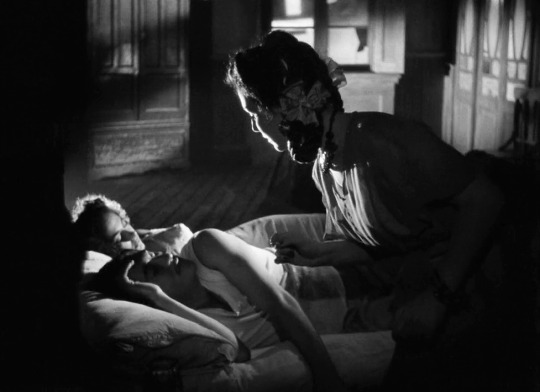
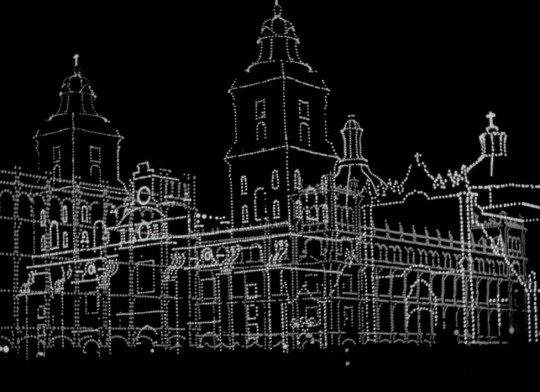

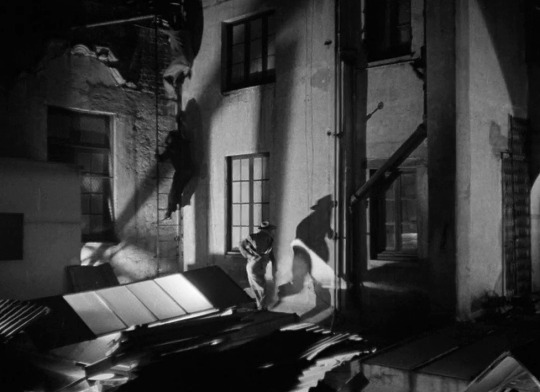
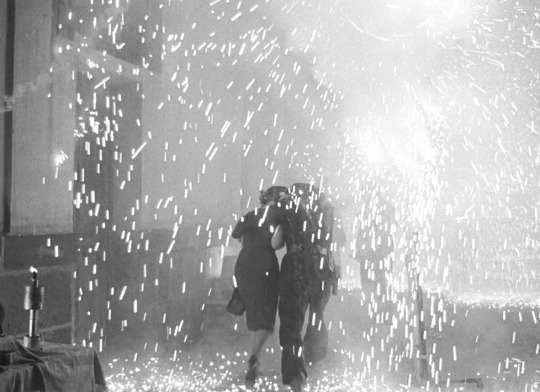
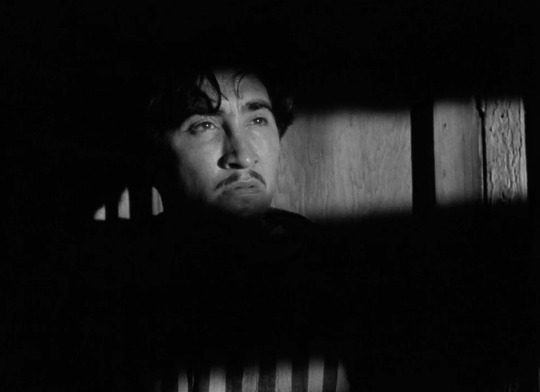
Salón México (1949)
Directed by Emilio Fernández
Cinematography by Gabriel Figueroa
#salon mexico#salón méxico#emilio fernandez#gabriel figueroa#mexico#mexican golden age#film#screencaps#rodolfo acosta#marga lopez#miguel inclan#dailyworldcinema
21 notes
·
View notes
Text

Gabriel Figueroa, April 24, 1907 – April 27, 1997.
6 notes
·
View notes
Text




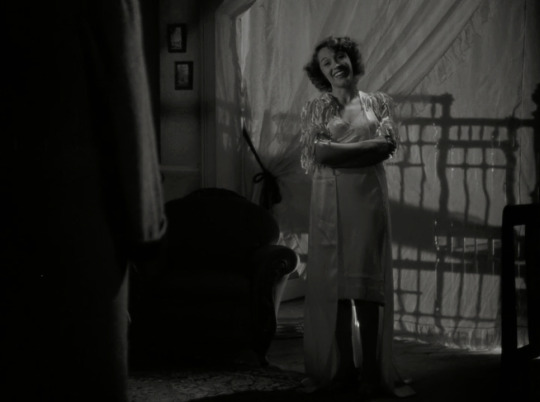


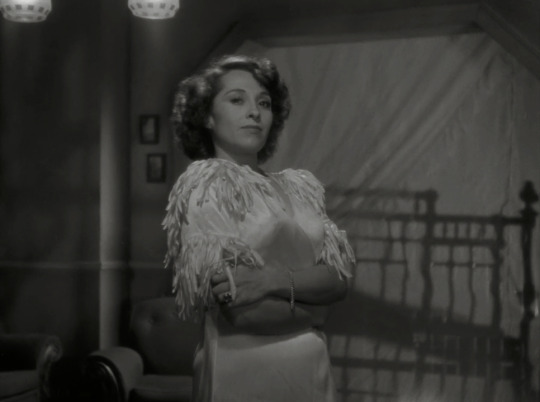

Another Dawn / Distinto amanecer (1943)
[imdb | letterboxd]
Director: Julio Bracho
Cinematographer: Gabriel Figueroa
Performers: Andrea Palma & Beatriz Ramos
#another dawn#distinto amanecer#1940s#1943#julio bracho#gabriel figueroa#andrea palma#beatriz ramos#mexican cinema#cine mexicano#cinematography#classic movies#classic film#film noir#noir
23 notes
·
View notes
Photo



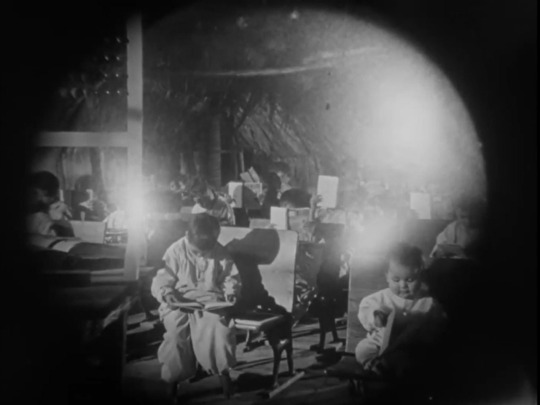
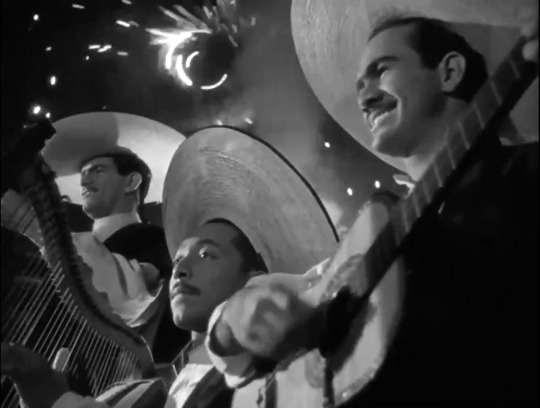

Emilio Fernández’s The Pearl (1947)
#La perla#The Pearl#Emilio Fernandez#Indio Fernandez#Mexican cinema#cinema#cinematography#film stills#film#classic film#movies#movie stills#pedro armendariz#mexico#32 mm#gabriel figueroa#40s film#40s
17 notes
·
View notes
Text



El Escapulario, 1968. Servando González. Gabriel Figueroa.
6 notes
·
View notes
Text
«Estoy seguro de que, si algún mérito tengo, es saber servirme de mis ojos, que conducen a las cámaras en la tarea de aprisionar no sólo los colores, las luces y las sombras, sino el movimiento que es la vida» Gabriel Figueroa.
Referirse a Gabriel Figueroa es hablar del hombre que creó la imagen de México en el cine, convirtiéndose en el director de fotografía que ha realizado más películas en el país (alrededor de doscientas).
Sin duda, él es parte fundamental de la historia del cine, no sólo en México, sino en el mundo entero.
Por eso hoy recordamos el legado de Gabriel Figueroa (24 de abril de 1907 -27 de abril de 1997) y a su fotografía llena de significados, claroscuros, texturas y matices.�
¿Puedes reconocer sus películas? ¿Cuáles otras recuerdas?






6 notes
·
View notes
Photo






Nouveau retour à mon projet de présenter la plupart de mes 55500 photos (et des brouettes). Plus trop loin du présent….
2016. Marseille en octobre, Avec Christine, une petite balade !
A la Ciotat, la Calanque de Figuerolles avec le Rocher du Capucin au profil d’aigle puis le Parc du Mugel, qui grimpe jusque sur les flancs du Cap Canaille.
On voit des conglomérats dont des galets cassés montrent l’intérieur. Sur la dernière, on voit l’Île Verte. On est dans le Parc National des Calanques.
#souvenirs#la ciotat#mugel#parc du mugel#le mugel#fi#gabriel figueroa#parc national des calanques#calanque de figuerolles#éroionn#rocher du capucin#christine#moustache#falaise#cap canaille#île verte
3 notes
·
View notes
Text
Los Olvidados
Jesus, christ everything about this movie makes me grateful for well everything...
There are three main characters in this movie, Jaibo, Pedro, and Ojitos. They each have their own story of abandonment.
Ojitos was told to wait for his dad in a market, although he never came leaving the poor boy to weep. Jaibo never meets his dad and only remembers his mom through memory. Pedro has a mom but still feels abandoned by her lack of love and negligence. Only caring about the younger ones, unlike Pedros who left her unwillingly with a child. This really struck me because it’s not Pedro's fault for being alive or the mom's for not wanting one.
Pedro’s story made me really sad, the poor boy tried to get a job to finally earn his mother’s love. But his mother still pushes him aside telling him he should stay there. His mom always insists he causes trouble but Pedro can’t help it.
The character that really pissed me off was Jaibo, he used others to his advantage, lied, steal, and did other nasty things. A very unlikable character, always following Pedro and getting him in trouble. As much as Pedro tried to change and leave his wrongs behind, Jaibo followed him like a pesky fly.
In the end, the mom decides to send him to reform school after he gets framed for stealing, His mom finally has a small change of heart and tries to look for him after he goes missing. But it's too late Jaibo kills him in a chilling fall to the head. They find him, deciding to just dump him somewhere. As the mom asks for Pedro, the viewer already knows that he’s in a wagon his corpse ready to be abandoned. It ends eerily with his body being thrown off the cliff as it goes down, leaving the viewer helpless. Knowing that the boys never gonna be found. His life ended short, and ma not having closure after finally choosing her son over work.
This movie made me very emotional, especially in one scene where the mother's anger gets the best of her, I felt as helpless as Pedro watching the event unfold and not being able to stop it.
Everything about this movie is raw. They don't sugarcoat their misdeeds, abandonment, or deaths. It sorta reminds me of the outsiders but much more dark, not like the themes weren't already dark but you get my point. There's symbolism with chickens and hens being in the scene. Jaibo and his gang pick on the weak and helpless, destroying their material objects in place of their unwillingness to give over what they have. Most of these being necessities that they need. Jaibo shows no mercy and recklessly destroys people and objects.
In all Ojitos and Pedro have my heart. Luis Buñuel and Gabriel Figueroa did a heartfelt job capturing these situations and characters. Just a warning that there's content that may trigger you, so check that in case you watch the movie. This movie will definitely make you cry, so have some tissues ready.


#los olvidados#mexican cinema#black and white film#movie review#mexican#luis buñuel#gabriel figueroa#The young and the damned#spoilers#my late night movie review#man my eyes are probably puffy
4 notes
·
View notes
Photo

The Scapular (1968, Mexico)
Also known by its original title, El escapulario, Servando González’s The Scapular is one of the finest examples of classic Mexican horror filmmaking. For those versed in modern horror, adjust your expectations. Atmospheric from its opening moments and making full use of its sparse environments, this movie does not depend on bloody set pieces or instant frights. Instead, The Scapular prefers gradual storytelling through flashbacks, all while it refuses to answer how any of its unlikely events might be possible. The screenplay by González, Jorge Durán Chávez, and Rafael García Travesi navigates questions of Catholic faith, political preferences during the Mexican Revolution (1910-1920), and love amid more grotesque moments one comes to expect in a horror film. Those horror elements – of spirits staying true to their word – are most prominent at the very beginning and second half of the film, and absent for almost all the first half. A major contribution from cinematographer Gabriel Figueroa – regarded by some to be the greatest Mexican cinematographer of all time – and his Hollywood-influenced lighting elevates the movie, bathing the screen in intoxicating black-and-white.
Something during or after the Mexican Revolution, Father Andrés (Enrique Aguilar) pulls into town on a late train, following an unseen individual to the residence of Doña María (Ofelia Guilmáin). While the padre and the unseen person – the camera nods “yes” in response to a few questions from the padre – amble through town, two bandits follow close behind. They have been stalking Father Andrés since he disembarked the train, hoping to pilfer his gold watch. They decide to wait until after he administers his sacraments to Doña María. Inside, Doña María – whom the padre knows almost nothing about – hands the padre a scapular (a primarily Catholic garment of piety), which she claims to have saved the lives of her two eldest sons. El escapulario, for most of its remaining runtime, flashes back to the stories of those two sons, Julián (Carlos Cardán) and Pedro (Enrique Lizalde).
Once a soldier for the Mexican government, Julián defects and joins the rebels in their fight against Porfirio Díaz’s dictatorship. For Pedro, he is working for his uncle at a saddle shop, but has his eyes on the village chief’s niece, Rosario (Alicia Bonet) – in his attraction, class tensions come to a head.
Servando González, Jorge Durán Chávez, and Rafael García Travesi’s screenplay does the best it can with an unwieldy story structure. Though El escapulario is a breezy eighty-five minutes, the flashbacks for Julián and Pedro both feel slightly too long while the audience is itching for a macabre payoff. Nevertheless, the screenplay juggles numerous themes without ever feeling forced. Discussion about the Mexican Revolution is mostly confined to Julián’s story. At times, the dialectic between Mexico’s then-contemporary military dictatorship and peasant-led revolution sounds too much like propaganda. But given that Doña María is responsible for imparting this story to the padre (and, by extension, the audience), one can expect some over-romanticizing the revolutionary cause. El escapulario firmly sympathizes with the revolutionaries – following how popular historical memory is in Mexico today. In Julián’s story, this ideological conflict takes place entirely within a military and revolutionary backdrop. Civilian perspectives are not present for this part, but there are mentions of a groundswell of support for the revolutionaries. Acknowledging these partisan emotions and political interpretations, viewers who have not seen the entirety of The Scapular should accept the bare facts of Doña María’s recounting of Julián and Pedro’s stories as truthful – even though she was not present for any of the moments she describes. To say more risks spoiling the entire film.
Pedro’s chapter of El escapulario is less explicitly political than his elder brother’s, but related tensions persist. Pedro, firmly in the working class but not poor, inspires the wrath of Don Augustín (Jorge Russek, who played Major Zamorra in 1969’s The Wild Bunch) by even looking longingly at his niece, Rosario. Don Augustín is no moustache-twirling villain, but his disregard for his fellow villagers and overinflated opinion of himself make clear his sympathies for the Porfiristas against the revolutionaries and peasantry. Director Servando González keeps the focus on the brothers in both flashbacks, rooting the film through the perceptions of those with little to benefit under the Porfirio Díaz regime. It is in Pedro’s story that the first bits of horror filmmaking appear since the film’s opening minutes. Occult, perhaps darkly religious, forces influence developments as Pedro disregards Don Augustín’s advice to avert his wandering glance from his niece. These moments hinge on the scapular, as Don Augustín enlists others to intimidate – by force, if necessary – Pedro and Rosario from even thinking about each other.
In those moments, cinematographer Gabriel Figueroa’s work truly shines. Figueroa, who, in 1935, lived in the United States for a year to formally study his craft under Gregg Toland (1940’s The Grapes of Wrath, 1941’s Citizen Kane), certainly learned much from the man he considered his teacher. Even after returning home to Mexico in 1936, Figueroa continued to analyze Toland’s work closely – from chiaroscuro techniques to deep focus cinematography. But even before leaving for America, Figueroa’s work as a still photographer exemplified someone with a keen eye for composition. And long after his time under Toland, Figueroa would shadow some of Hollywood’s best cinematographers on his trips to Southern California; Toland himself, when visiting Mexico, would make suggestions and critique his old student’s work. Figueroa also enjoyed the privilege of friendships with Mexican artists Diego Rivera (who counseled him on how to use color – a story for another time, as El escapulario is a black-and-white film) and David Alfaro Siqueiros. Siqueiros provided Figueroa advice on escorzo or, in English, foreshortening. Foreshortening is an artistic technique on perspective that allows an artist to portray something that appears to be closer or shallower than it is.
Foreshortening becomes crucial in El escapulario’s second half, as the narrative descends in into the grisly and ghostly. A nocturnal horse ride during Pedro’s chapter stumbles upon a horrific sight, aided by foreshortening, sharp but still-horizontal angles, and quick cuts as the horse begins to buck wildly – spooked by unnatural forces that animals in movies just seem to pick up on faster than any human. The lighting’s influence on this scene’s mood is impossible to replicate if this was a color film. El escapulario’s final two scenes – by chicanery, candlelight, and cobwebs – are the culmination of what Gabriel Figueroa picked up from the likes of Toland and Siqueiros. Even when traversing an empty street at the witching hour or in a desolate room, there always seems to be a presence watching and waiting. Early morning mist appears to curl around the characters, like wispy hands. I am uncertain how this effect was achieved, and it might be seen as campy in most other contexts. Here, it is as if unknown forces are toying with the characters’ souls. It is spectacular camerawork from Figueroa, in his only collaboration with Servando González in a career spanning more than two hundred movies.
Viewers could also approach The Scapular from a religious context. The lines between life and death, faith and the absence of it, are tenuous. Catholicism and Catholic metaphysics are present from the prologue, impacting the dialogue and behaviors of all of the characters from their moments of introduction. Those more familiar with Catholicism in Mexico – the 2020 Mexican census says 77.7% of Mexicans practiced Roman Catholicism – can hopefully make more educated and nuanced contributions to religiously-inflected analyses of The Scapular than I possibly could.
The Golden Age of Mexican cinema, in some ways mirroring, but distinct from, a similar Golden Age for the nation’s northern neighbors, had been concluded for a decade when Servando González’s El escapulario premiered in theaters in 1968. Though some Mexican horror movies flourished before the end of that Golden Age, the films that fueled – and continue to inspire – Mexican horror cinema followed the footsteps of Fernando Méndez’s El vampiro (The Vampire; 1957), a late Golden Age film that broke through in a filmmaking and moviegoing environment heavy on melodramas and Westerns. The writing of this chapter of Mexican film history continues, still hampered by the 1982 Cineteca Nacional fire that destroyed several thousand Mexican films, screenplays, and books and an anecdotal domestic disinterest in Mexico’s cinematic heritage.
With thanks to the Academy Museum of Motion Pictures in Los Angeles and guest programmer Abraham Castillo Flores (also Head Programmer at Morbido Fest, based in Mexico City), the reclamation of that history is underway. Yours truly was able to see a restored print of El escapulario with complete English subtitles, although some audio hitches – especially in regards to the film’s score – remain. The technical mastery is apparent across El escapulario, and Servando González’s directorial vision and Gabriel Figueroa’s visual flourishes are worth the watch even for those unaccustomed to non-contemporary horror filmmaking. El escapulario is a visual treat, a chilling entry into the canon of classic Mexican horror.
My rating: 7.5/10
^ Based on my personal imdb rating. My interpretation of that ratings system can be found in the “Ratings system” page on my blog (as of July 1, 2020, tumblr is not permitting certain posts with links to appear on tag pages, so I cannot provide the URL).
For more of my reviews tagged “My Movie Odyssey”, check out the tag of the same name on my blog.
#El escapulario#The Scapular#Servando González#Enrique Lizalde#Enrique Aguilar#Carlos Cardán#Federico Falcón#Alicia Bonet#Ofelia Guilmáin#Eleazar García#Jorge Durán Chávez#Rafael García Travesi#Gabriel Figueroa#Gregg Toland#My Movie Odyssey
4 notes
·
View notes
Text

Gabriel Figueroa, April 24, 1907 – April 27, 1997.
9 notes
·
View notes
Text
Kelly's Heroes (1970)
Kelly's Heroes by #BrianGHutton starring #ClintEastwood and #TellySavalas, "only go for this one if its familiarity is appealing to you",
BRIAN G. HUTTON
Bil’s rating (out of 5): BB.5
USA/Yugoslavia, 1970. Metro-Goldwyn-Mayer, Katzka-Loeb, Avala Film, The Warriors Company. Screenplay by Troy Kennedy-Martin. Cinematography by Gabriel Figueroa. Produced by Sidney Beckerman, Gabriel Katzka. Music by Lalo Schifrin. Production Design by John Barry. Costume Design by Anna Maria Feo. Film Editing by John Jympson.
A platoon of American…
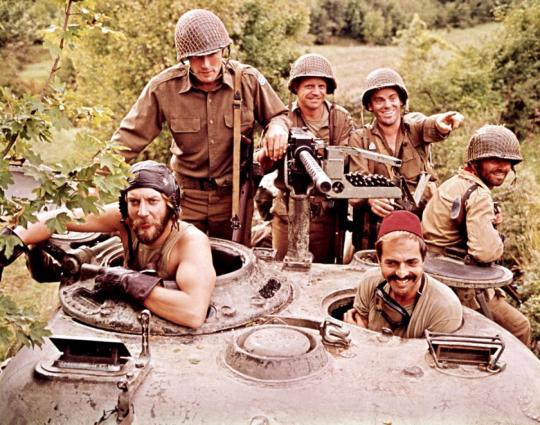
View On WordPress
#Anna Maria Feo#Avala Film#Brian G. Hutton#Carroll O&039;Connor#Clint Eastwood#David Gross#David Hurst#Dee Pollock#Dick Balduzzi#Don Rickles#Donald Sutherland#Donald Waugh#Frank J. Garlotta#Fred Pearlman#Gabriel Figueroa#Gabriel Katzka#Gavin MacLeod#Gene Collins#George Fargo#George Savalas#Hal Buckley#Harry Dean Stanton#Harry Goines#Hugo De Vernier#James McHale#Jeff Morris#John Barry#John G. Heller#John Jympson#Karl-Otto Alberty
2 notes
·
View notes



